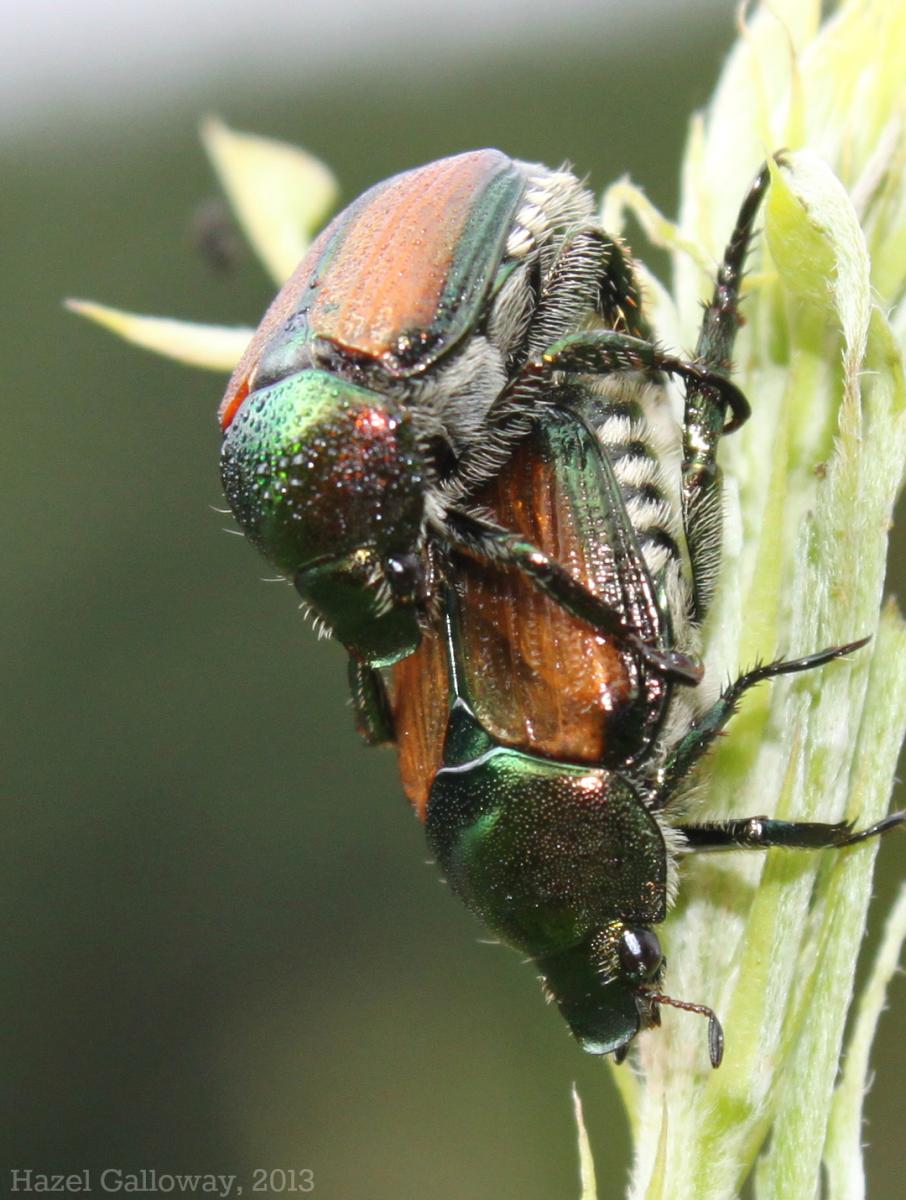 True to their name, Japanese beetles were introduced accidentally from Japan around a century ago. They were first detected in a nursery in Riverton, New Jersey in 1916, and likely arrived on a ship transporting exotic plants. Since then, they have spread as far west as Missouri, with a few isolated populations in California. Although they have many natural predators in their native range, there are very few in North America, and they have come to be considered a serious agricultural pest.
True to their name, Japanese beetles were introduced accidentally from Japan around a century ago. They were first detected in a nursery in Riverton, New Jersey in 1916, and likely arrived on a ship transporting exotic plants. Since then, they have spread as far west as Missouri, with a few isolated populations in California. Although they have many natural predators in their native range, there are very few in North America, and they have come to be considered a serious agricultural pest.
Japanese beetles are beautiful insects with metallic green bodies and metallic bronze or coppery-brown elytra (hardened wing covers). One of the characteristic features of these beetles is the presence of 5 distinct patches of white hair on each side of their abdomen, and one more pair on the final abdominal segment. This hair protrudes from under the elytra, which does not fully cover the beetle’s body. At 8-12 mm in length, they are heavyset beetles with fearsome appetites.
The adults consume foliage from a huge variety of trees, shrubs, and grasses. They are known to feed on at least 300 species, from grapevines to willows to horsechestnuts. A particularly heavy infestation can result in the “skeletonizing” of leaves on a plant, where all the leaf matter is consumed and only the veins remain. They typically travel and feed in groups; according to the Encyclopedia Britannica, “a swarm of Japanese beetles can denude a peach tree in 15 minutes, leaving nothing but bare branches and the fruit pits.” Because of their status as a harmful, invasive pest, great efforts have been made to decrease existing populations and prevent them from moving to new areas. Some of the beetles’ natural predators (mainly flies and wasps) have been imported from Japan in an effort to control the population. Other human strategies have included pheromone-releasing traps, the use of a bacterium known to cause milky disease in the larvae, and applying insecticide to grub-infested turf. However, none of these methods are extremely effective, and the range of the beetles continues to increase across North America.
Mid- to late-summer marks the season when these beetles emerge from their pupal stage underground. On warm days, the adult insects often congregate on host plants to feed and find mates. After mating, females bury 1-4 eggs in loose, moist soil. An individual female will often lay more than 40 eggs over the course of a season. Around 2 weeks after being deposited in the ground, the eggs hatch into tiny, grub-like larvae that feed on grass and other plant roots until the fall. Once cold weather sets in, the grubs burrow deeper into the soil and hibernate until springtime. Although they are usually found 5-15 cm (2-6 in) below the soil, they may burrow as deep as 25 cm (10 in). Once warm weather returns, the grubs will feed for several more weeks before beginning to pupate. The adults emerge from the soil when the insects have completed the pupal stage, which lasts anywhere from 11 to 20 days. The adults only live for 30 to 45 days, although cold conditions typically lengthen their lifespan, while warm conditions shorten it significantly.
These beetles were collected on plants growing on the dam near the edge of the pond.
Hazel Galloway
Sources:




